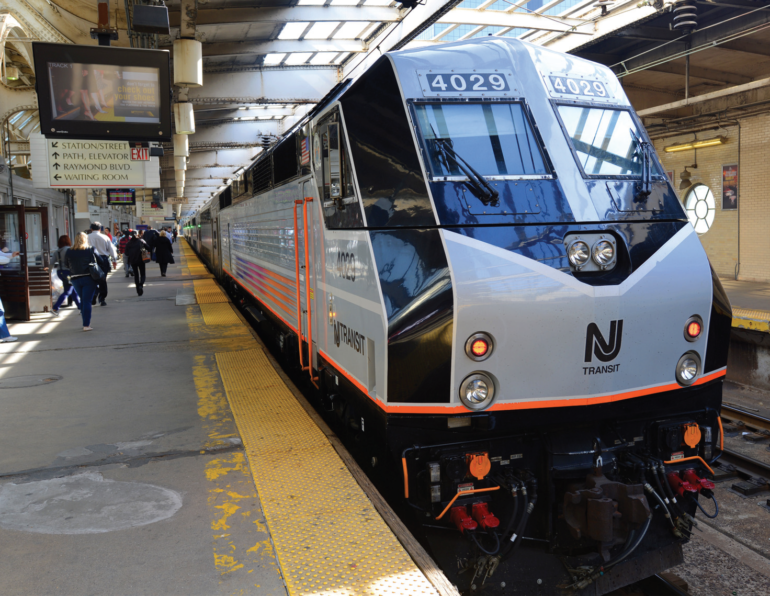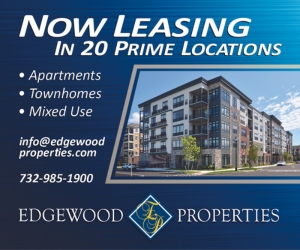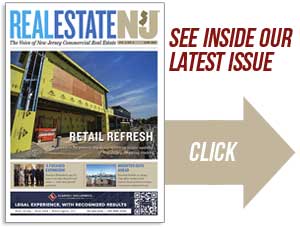By Joshua Burd
Office markets around New Jersey’s transit hubs are still outshining their suburban counterparts, with a widening gap in asking rents and continued interest from major tenants.
Those are among the findings in JLL’s latest Transit Hub Perspective report, a look at the state’s top submarkets in which office space is clustered around train stations. The research found that average asking rents are rising in both transit hubs and traditional suburban settings, reaching $34.53 and $25.50 per square foot at midyear, respectively, but JLL noted that the $9.03-per-square-foot difference was the largest discrepancy in nearly a decade.
The firm tracked eight transit hubs as part of its research: Hoboken/Jersey City, Newark, New Brunswick, Trenton, Summit, Metropark, Princeton and Morristown. Small to midsized users are decidedly active in those submarkets — as they are across the state — as nearly 60 percent of the deals signed during the first half of 2019 were between 10,000 and 25,000 square feet.

“With transactions greater than 100,000 square feet being elusive, deals less than 25,000 square feet in size were responsible for most of the current demand seen in the transit markets,” Stephen Jenco, JLL’s director of suburban tristate office research, wrote in the report. “Despite today’s leasing environment, the state’s transit hub markets are expected to remain on track as tenants migrate towards buildings with access to mass transportation for their workforces and clients.”
Overall vacancy in the eight transit hub submarkets was 20 percent at midyear, JLL found, thanks in part to exceedingly tight supply in cities such as Summit and New Brunswick. By comparison, vacancy in suburban New Jersey was 24 percent, which also represented a slight decline from 2018, having been helped by the demolition or conversion of older vacant buildings.
Jenco, a vice president with the firm, added that New Jersey’s transit hubs “are expected to remain active as office occupiers spanning a broad spectrum of business sectors pursue space options in proximity to walkable amenities and with access to mass-transit options for their employees.” JLL tracked some 2.6 million square feet of office requirements navigating transit hub markets at midyear, up from the 2.1 million square feet seen in 2018.
The firm also identified more than 10 requirements for space in excess of 100,000 square feet in transit hub markets. Yet a dearth of modern, high-end space combined with persistent demand are expected to maintain upward pressures on Class A rental rates.
“Class A buildings in transit hub markets remain on the radar screen for tenants with space requirements,” Jenco wrote. That has translated into average asking Class A rents of $45.60 per square foot in Hoboken/Jersey City, which represented the highest rental rate among the state’s transit hub markets.
JLL also cited Newark as a potential alternative for companies looking for urban space with access to Manhattan, offering an average asking Class A rental rate of $34.50 per square foot. Both the Hudson waterfront and Newark could be impacted by the lack of a state incentive program: The flagship Grow New Jersey program, which Jenco said “had played a notable role in attracting corporate investments to transit markets” expired at the end of June and has no clear successor in sight, as Gov. Phil Murphy and lawmakers have clashed over incentives policy going forward.
Meantime, Class A building rents near the Metropark train station increased nearly 1 percent from year-end 2018 to $34.75 per square foot six months later, which was the highest rental rate among the four suburban transit hubs tracked by JLL. Coming in second was the Princeton submarket’s $30.11 per square foot average asking Class A rental rate.
Despite the growing disparity between locations with and without train stations, JLL cautioned against counting out New Jersey’s suburban office markets.
“Whether located in transit hubs or suburban markets, high-end Class A space remains on the corporate wish list,” Jenco wrote. “This demand had pulled the Northern and Central New Jersey Class A vacancy rate to its lowest level in more than seven years.
“However, the relatively empty speculative construction pipeline will challenge tenants seeking modern work environments for their operations. As a result, savvy landlords in suburban and transit hub markets alike are upgrading their buildings and packing them with the amenities to help make their product stand above the competition.










